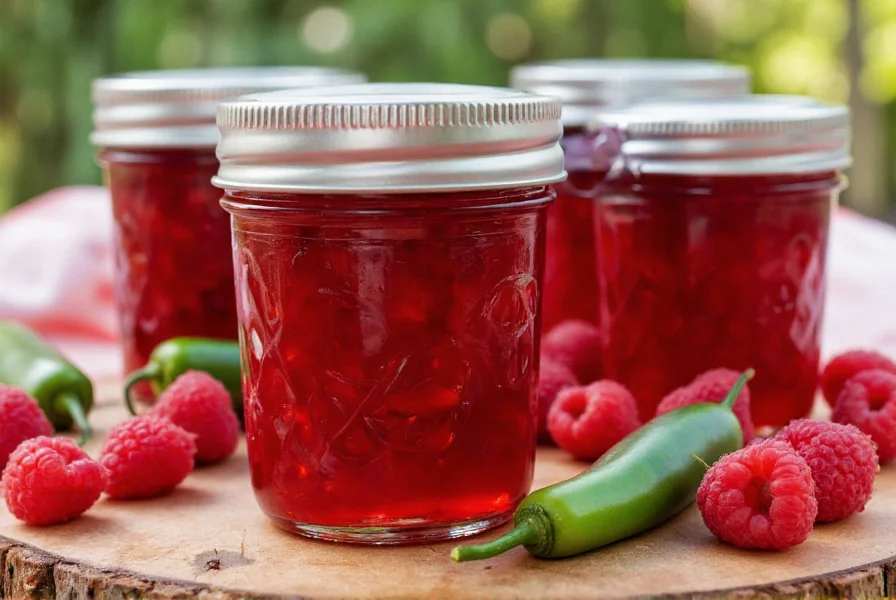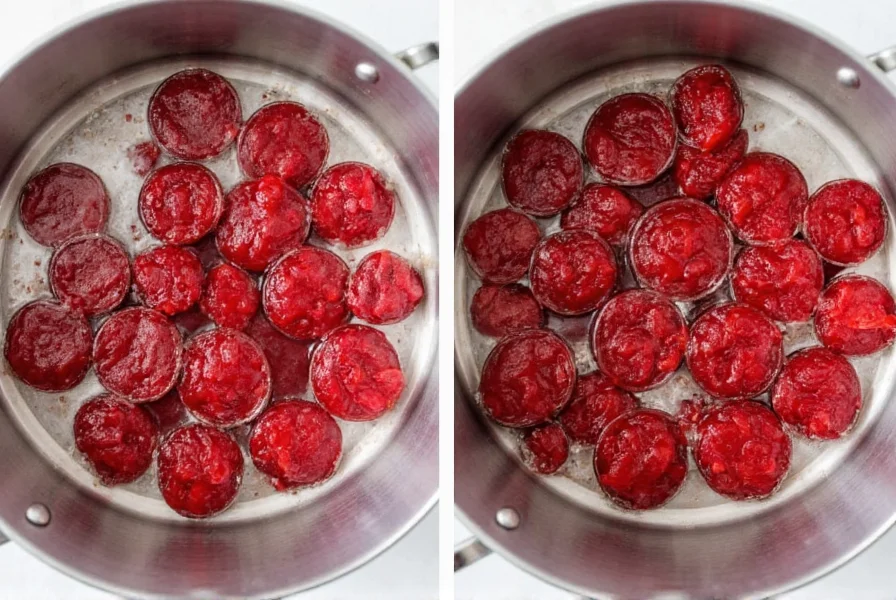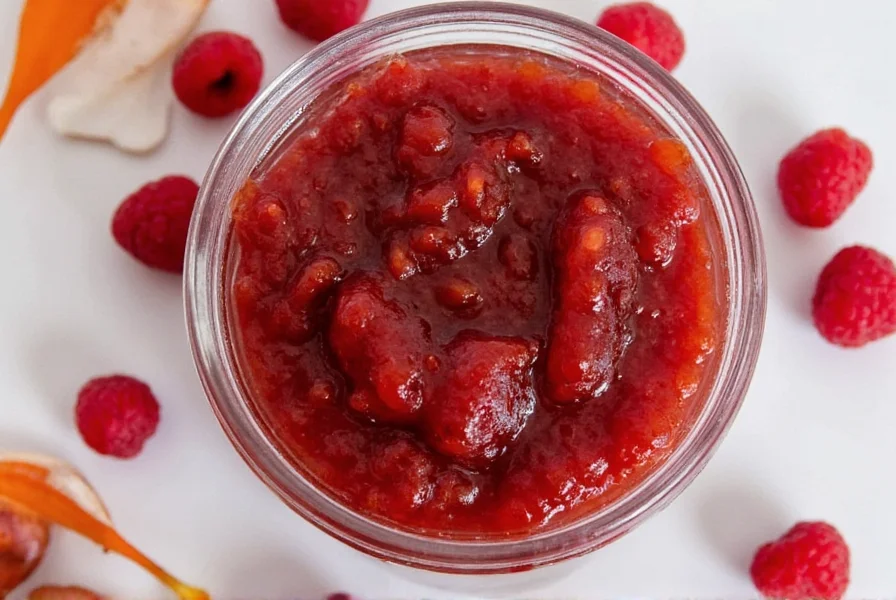Understanding Raspberry Pepper Preserves: A Culinary Delight
Raspberry pepper preserves represent a sophisticated fusion of sweet and spicy flavors that has gained popularity among home cooks and professional chefs alike. Unlike traditional fruit preserves, this unique preparation intentionally incorporates the heat of chili peppers to create a complex flavor profile that elevates ordinary dishes to extraordinary culinary experiences.
The Perfect Sweet-Heat Balance
The magic of raspberry pepper preserves lies in their carefully calibrated balance between the tart sweetness of ripe raspberries and the varying heat levels of different peppers. This balance isn't accidental—it's the result of precise ratios that allow both flavors to shine without overwhelming the palate.
When properly made, raspberry pepper preserves offer an initial burst of raspberry sweetness that gradually gives way to a gentle warmth that lingers pleasantly. The heat level can be customized based on the type and quantity of peppers used, making it adaptable to various palates and culinary applications.

Pepper Selection: Creating Your Desired Heat Profile
The choice of pepper dramatically affects both the heat level and flavor complexity of your preserves. Understanding pepper varieties helps you create preserves that match your intended use:
| Pepper Variety | Scoville Units | Flavor Profile | Best For |
|---|---|---|---|
| Jalapeño | 2,500-8,000 | Grassy, fresh heat | Beginner-friendly preserves, subtle warmth |
| Serrano | 10,000-23,000 | Sharp, bright heat | Medium heat preserves, noticeable kick |
| Habanero | 100,000-350,000 | Floral, tropical notes | Bold preserves, complex heat |
| Chipotle | 2,500-8,000 | Smoky, earthy | BBQ applications, deep flavor |
Essential Components for Perfect Preserves
Creating exceptional raspberry pepper preserves requires attention to several critical elements:
Fruit Quality Matters
Use ripe but firm raspberries for optimal flavor and pectin content. While fresh berries are ideal during summer months, high-quality frozen raspberries work equally well year-round and often contain more natural pectin since they're flash-frozen at peak ripeness.
Sugar and Pectin Considerations
The traditional ratio for raspberry preserves is 1:1 fruit to sugar by weight, but pepper preserves often benefit from slightly less sugar (about 3/4 cup per cup of fruit) to allow the pepper's complexity to shine through. When making homemade raspberry pepper preserves recipe variations, consider using low-sugar pectin to maintain proper setting while reducing overall sweetness.
Pepper Preparation Techniques
For controlled heat distribution, finely mince peppers or use a food processor to create a uniform mixture. Remember that seeds and white membranes contain most of the capsaicin—the compound responsible for heat—so removing these elements creates milder preserves. For consistent results when making raspberry habanero preserves, wear gloves during preparation to avoid skin irritation.
Step-by-Step Preparation Guide
Creating raspberry pepper preserves requires careful attention to timing and temperature. Follow these steps for successful results:
- Prepare 4-5 cups of fresh raspberries by washing and removing any stems
- Finely chop 1-2 peppers depending on desired heat level (start with less—you can always add more)
- Combine fruit, peppers, 3 cups sugar, and 1/4 cup lemon juice in a large non-reactive pot
- Bring to a gentle boil while stirring constantly
- Add pectin according to package instructions
- Return to full rolling boil and cook for exactly 1 minute
- Remove from heat and skim foam if necessary
- Pour into sterilized jars, leaving 1/4-inch headspace
- Process in a water bath canner for 10 minutes for proper preservation

Creative Culinary Applications
Raspberry pepper preserves transcend ordinary jam uses with their complex flavor profile. Consider these sophisticated applications:
Cheese Pairing Perfection
The sweet heat of raspberry pepper preserves creates exceptional pairings with various cheeses. Serve with creamy brie, tangy goat cheese, or sharp cheddar for an elevated cheese board experience. The preserves cut through rich cheeses while complementing their flavors—this is one of the most popular raspberry jalapeño preserves uses among entertaining enthusiasts.
Meat Glazes and Marinades
Transform ordinary proteins with a raspberry chipotle preserves glaze. Brush onto chicken, pork tenderloin, or salmon during the last 10 minutes of cooking for a beautiful caramelized finish. For a sophisticated sauce, simmer preserves with apple cider vinegar and Dijon mustard to create a restaurant-quality accompaniment.
Breakfast and Brunch Innovations
Move beyond toast—spread raspberry pepper preserves on cream cheese bagels, swirl into yogurt parfaits, or use as a filling for homemade danishes. The subtle heat wakes up your palate better than traditional sweet preserves, making it an excellent choice for what to serve with raspberry pepper jam at morning gatherings.
Storage and Safety Considerations
Properly canned raspberry pepper preserves maintain quality for 12-18 months when stored in a cool, dark place. Always check seals before use and refrigerate after opening. Discard if you notice mold, off odors, or bubbling—these indicate spoilage.
When canning raspberry pepper preserves safely, ensure you follow tested preservation methods. The acidity from raspberries and added lemon juice creates a safe pH environment for water bath canning, but improper processing can lead to spoilage. Never reduce the acid components in the recipe, as this affects both flavor and safety.
Troubleshooting Common Issues
Even experienced preserve makers encounter challenges. Here's how to address common problems:
- Too spicy? Balance with additional raspberry puree or a touch of honey
- Not setting properly? Ensure you reached the proper temperature (220°F/104°C) and used adequate pectin
- Overly sweet? Next batch reduce sugar slightly and add more lemon juice for balance
- Pepper flavor too muted? Increase pepper quantity or let preserves mellow for 2-3 weeks before serving
Exploring Flavor Variations
Once you've mastered the basic raspberry pepper preserves recipe, experiment with these sophisticated variations:
- Add fresh ginger for an extra layer of warmth
- Infuse with vanilla bean for floral complexity
- Substitute black pepper for chili peppers for raspberry black pepper preserves pairing ideas with roasted meats
- Add a splash of balsamic vinegar for depth
- Incorporate a touch of orange zest for citrus notes
These recipe variations allow you to customize preserves for specific culinary applications while maintaining the essential sweet-heat balance that makes raspberry pepper preserves so versatile.
Frequently Asked Questions
How long do homemade raspberry pepper preserves last?
Properly canned raspberry pepper preserves maintain freshness for 12-18 months when stored in a cool, dark place. Once opened, refrigerate and consume within 3-4 weeks. Always check for signs of spoilage like mold, off odors, or bubbling before use.
Can I reduce the sugar in raspberry pepper preserves?
Yes, but with caution. Sugar affects both sweetness and preservation. When making low-sugar raspberry pepper preserves, use tested low-sugar pectin and maintain proper acid levels with lemon juice. Reducing sugar too much may affect texture and shelf life, so follow reliable recipes specifically designed for reduced sugar.
What's the best pepper for beginner raspberry preserves?
Jalapeños are ideal for beginners making raspberry pepper preserves. They offer a manageable heat level (2,500-8,000 Scoville units) with a clean, grassy flavor that complements raspberries well. Start with one seeded jalapeño per batch, then adjust in future batches based on your preference. Remember that heat perception varies, so it's better to start mild and increase in subsequent batches.
How do I fix preserves that are too spicy?
If your raspberry pepper preserves are too spicy, you have several options: 1) Blend with additional unsweetened raspberry puree to dilute the heat, 2) Add a touch of honey or maple syrup to balance the heat with sweetness, 3) Incorporate a small amount of cream cheese when serving to mellow the spice, or 4) Let the preserves mellow for 2-3 weeks—the heat often integrates better with the fruit flavors over time.
Can raspberry pepper preserves be used in baking?
Absolutely. Raspberry pepper preserves work beautifully in baking applications. Use as a filling for thumbprint cookies, swirl into cheesecake batter, or incorporate into muffin batter. The heat provides a sophisticated contrast to sweet baked goods. For best results in baking, use preserves with moderate heat levels like those made with jalapeños or serranos rather than extremely hot peppers.











 浙公网安备
33010002000092号
浙公网安备
33010002000092号 浙B2-20120091-4
浙B2-20120091-4